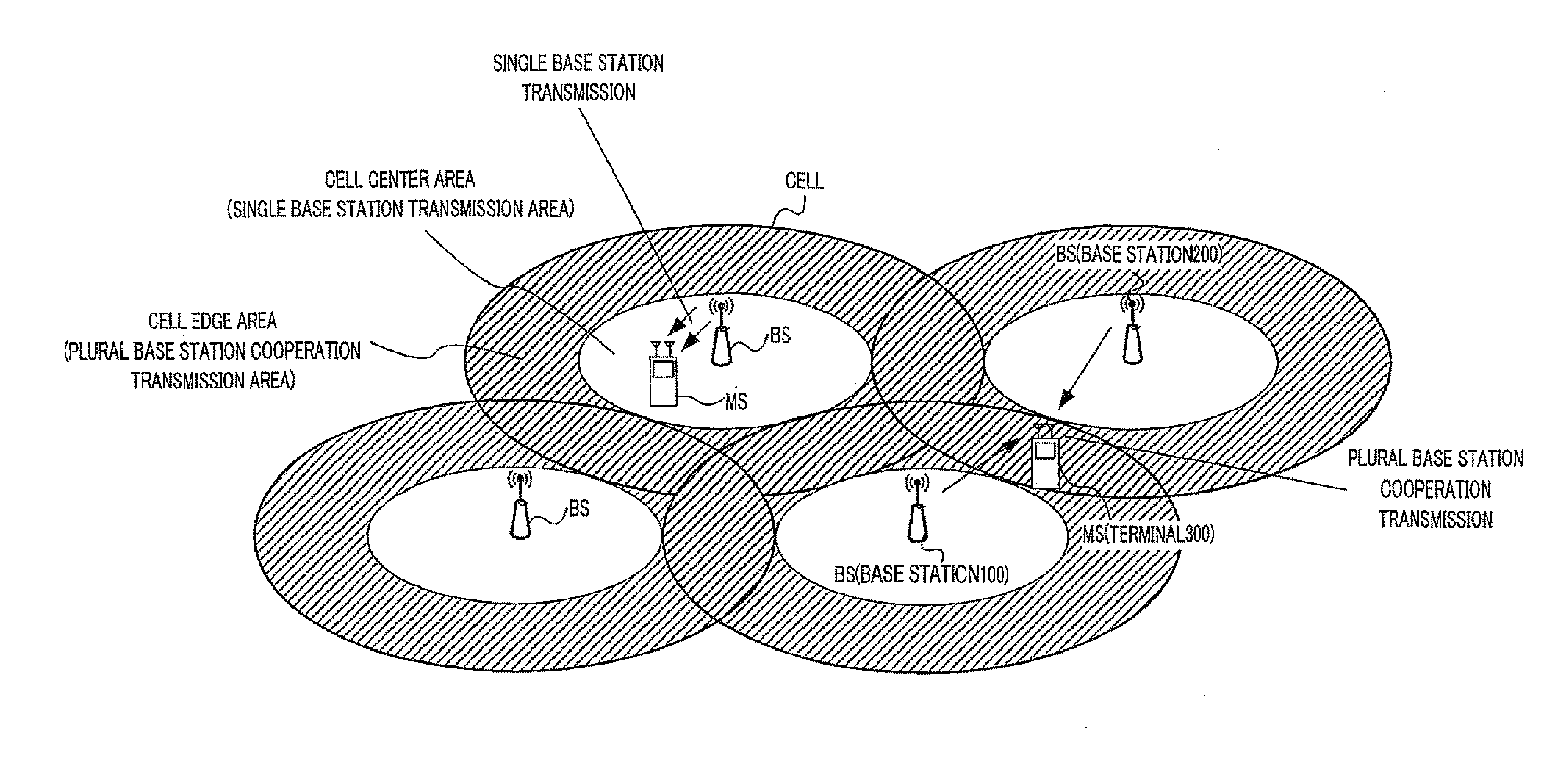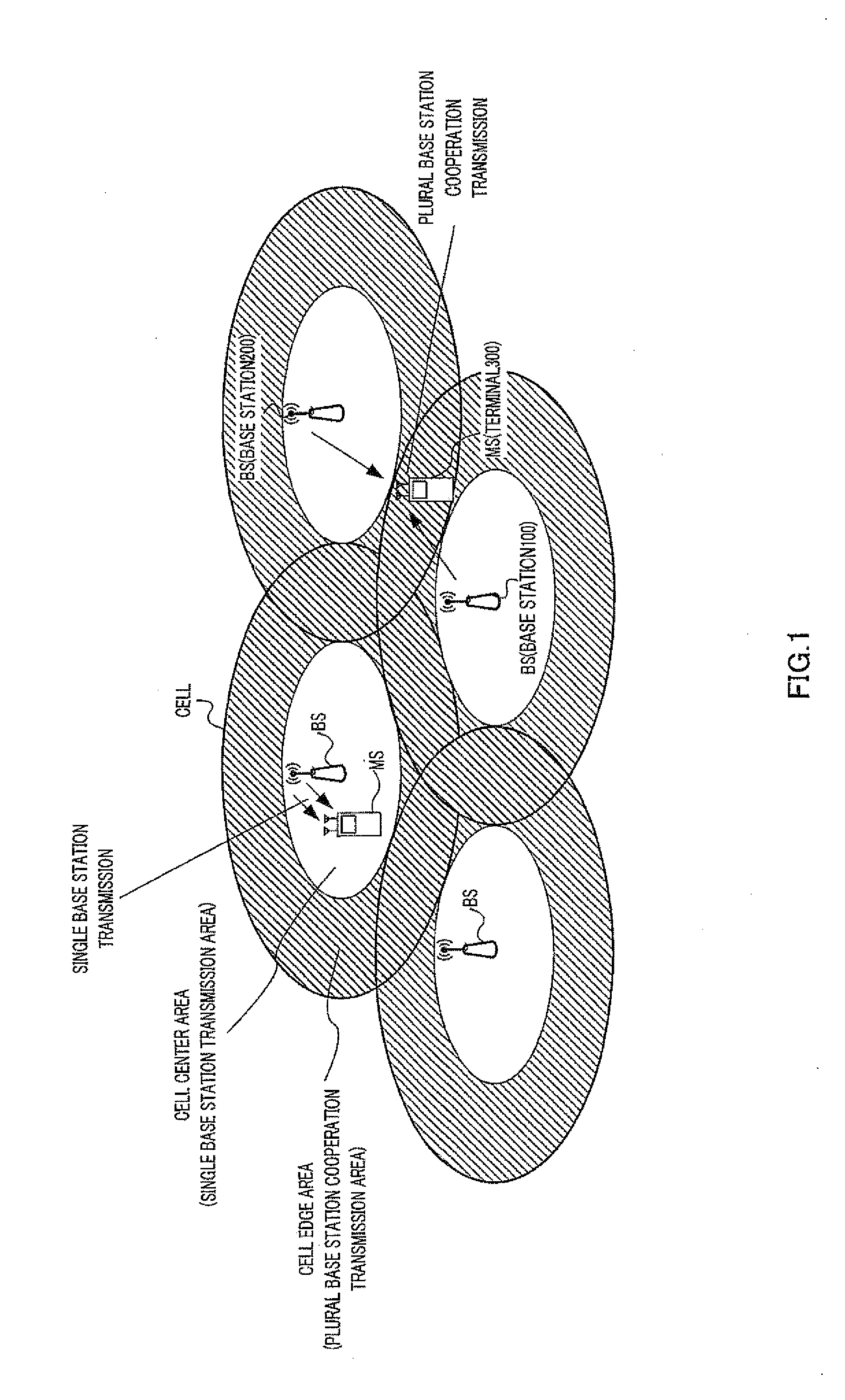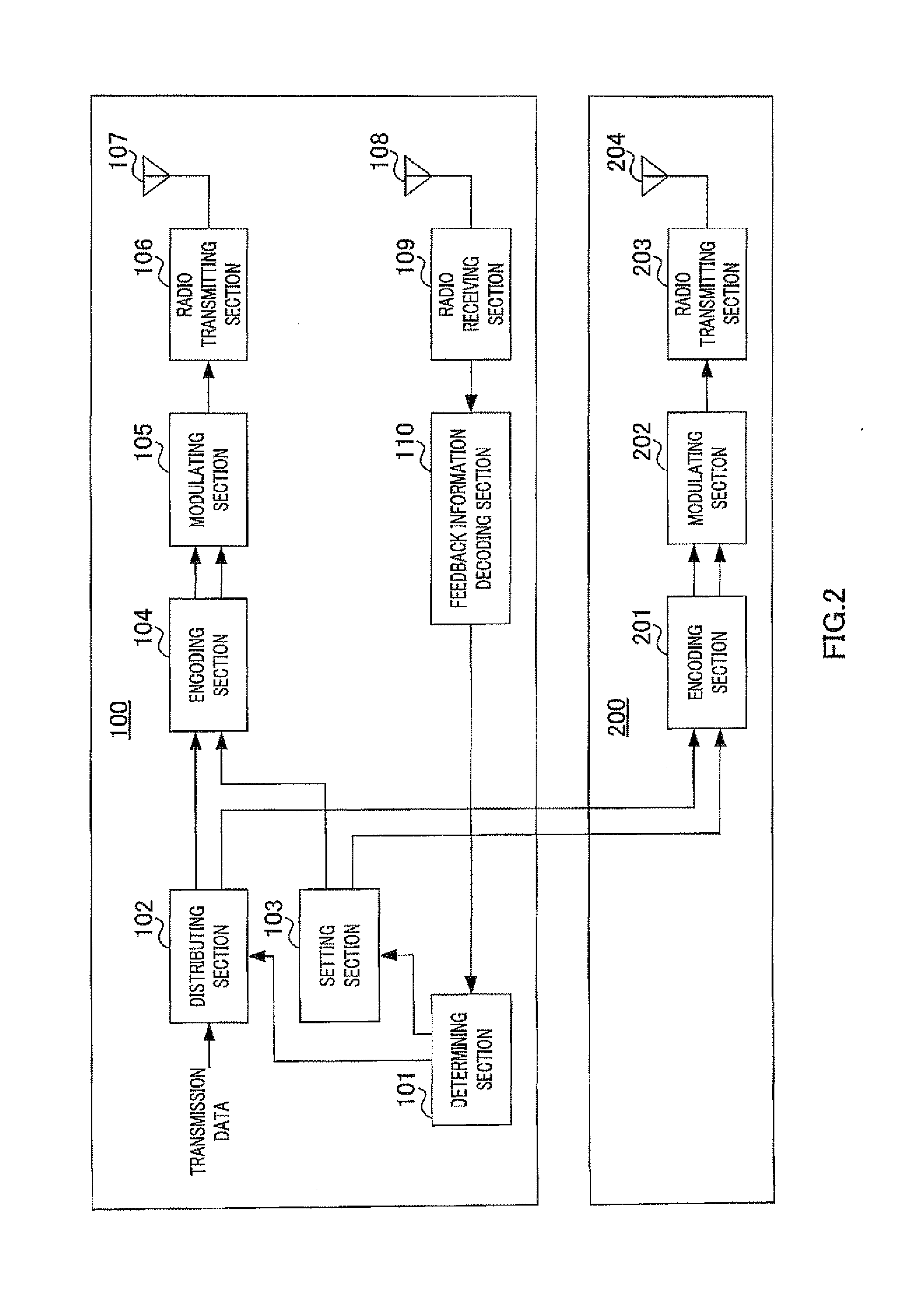Radio base station apparatus, radio terminal apparatus and wireless communication method
a radio terminal and base station technology, applied in the field of radio terminal apparatus, radio communication method, can solve problems such as unsatisfactory reception characteristics, and achieve the effects of reducing the amount of feedback information, improving the reception characteristics of the terminal located near the edge of the cell, and accurately determining the transmission schem
- Summary
- Abstract
- Description
- Claims
- Application Information
AI Technical Summary
Benefits of technology
Problems solved by technology
Method used
Image
Examples
embodiment 1
[0047]FIG. 2 illustrates the configurations of base stations 100 and 200 of the radio communication system (see FIG. 1) according to this embodiment. FIG. 3 illustrates the configuration of terminal 300. Here, a base station (base station 100 in FIG. 1) covering an area where a terminal (terminal 300 in FIG. 1) is present is referred to as a master base station (or also referred to as a serving cell). Another base station (base station 200 in FIG. 1) executing the CoMP transmission along with the master base station is referred to as a slave base station (or also referred to as a neighbor cell). Base station 100 serving as the master base station notifies base station 200 serving as the slave base station of control information regarding a frequency band allocable for transmission data.
[0048]In base station 100 (the master base station) illustrated in FIG. 2, determining section 101 determines one of the single base station transmission and the CoMP transmission as a transmission sc...
embodiment 2
[0079]In this embodiment, a ratio (hereinafter, referred to as a frequency band ratio) between the bandwidth of the frequency bands used for the single base station transmission and the bandwidth of the frequency bands used for the CoMP transmission in the system band is set to be variable. The frequency band ratio is fixed in Embodiment 1. However, in this embodiment, the frequency band ratio is variable to construct the system capable of executing flexible control in accordance with the communication state with the terminal.
[0080]In this embodiment, setting section 103 (see FIG. 2) of base station 100 receives the number of terminals (hereinafter, referred to as the number of cell edge terminals) located in the cell edge area of base station 100 illustrated in FIG. 1, and the number of terminals (hereinafter, referred to as the number of cell center terminals) located in the cell center area of base station 100 illustrated in FIG. 1 (or receives a ratio of the number of cell edge ...
PUM
 Login to View More
Login to View More Abstract
Description
Claims
Application Information
 Login to View More
Login to View More - R&D
- Intellectual Property
- Life Sciences
- Materials
- Tech Scout
- Unparalleled Data Quality
- Higher Quality Content
- 60% Fewer Hallucinations
Browse by: Latest US Patents, China's latest patents, Technical Efficacy Thesaurus, Application Domain, Technology Topic, Popular Technical Reports.
© 2025 PatSnap. All rights reserved.Legal|Privacy policy|Modern Slavery Act Transparency Statement|Sitemap|About US| Contact US: help@patsnap.com



